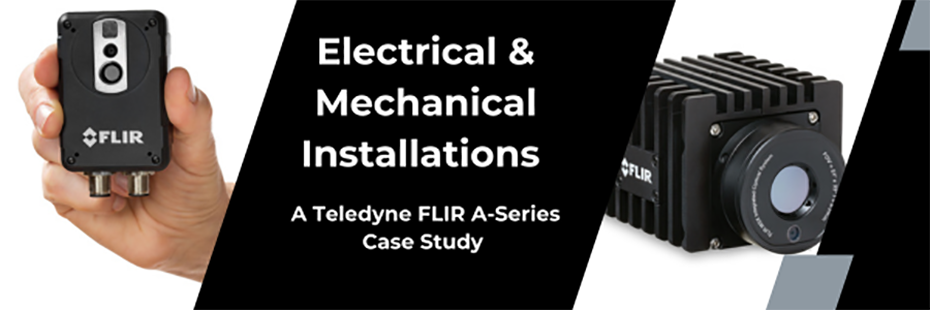 Combining FLIR’s state-of-the-art thermal imaging with Teledyne’s innovative machine vision technology, Teledyne FLIR has developed an array of sophisticated yet simple-to-use thermal imaging automation cameras. Teledyne FLIR’s A-series ranges from compact entry models, like the AX8, to sophisticated imagers suitable for use in hazardous areas, for example, the A310 Ex, and includes configurable cameras with a selection of lenses, such as the A50, A70, A400, A500, and A700. Ideal for when precision and control are mission critical, Teledyne FLIR’s A-series Automation Thermal Cameras are suitable for process control and quality assurance, early fire detection, and condition monitoring of electrical and mechanical installations.
Continue reading →
Combining FLIR’s state-of-the-art thermal imaging with Teledyne’s innovative machine vision technology, Teledyne FLIR has developed an array of sophisticated yet simple-to-use thermal imaging automation cameras. Teledyne FLIR’s A-series ranges from compact entry models, like the AX8, to sophisticated imagers suitable for use in hazardous areas, for example, the A310 Ex, and includes configurable cameras with a selection of lenses, such as the A50, A70, A400, A500, and A700. Ideal for when precision and control are mission critical, Teledyne FLIR’s A-series Automation Thermal Cameras are suitable for process control and quality assurance, early fire detection, and condition monitoring of electrical and mechanical installations.
Continue reading →Thermal imaging
-
Teledyne FLIR A-Series Automation Thermal Cameras Case Study: Electrical & Mechanical Installations
 Combining FLIR’s state-of-the-art thermal imaging with Teledyne’s innovative machine vision technology, Teledyne FLIR has developed an array of sophisticated yet simple-to-use thermal imaging automation cameras. Teledyne FLIR’s A-series ranges from compact entry models, like the AX8, to sophisticated imagers suitable for use in hazardous areas, for example, the A310 Ex, and includes configurable cameras with a selection of lenses, such as the A50, A70, A400, A500, and A700. Ideal for when precision and control are mission critical, Teledyne FLIR’s A-series Automation Thermal Cameras are suitable for process control and quality assurance, early fire detection, and condition monitoring of electrical and mechanical installations.
Continue reading →
Combining FLIR’s state-of-the-art thermal imaging with Teledyne’s innovative machine vision technology, Teledyne FLIR has developed an array of sophisticated yet simple-to-use thermal imaging automation cameras. Teledyne FLIR’s A-series ranges from compact entry models, like the AX8, to sophisticated imagers suitable for use in hazardous areas, for example, the A310 Ex, and includes configurable cameras with a selection of lenses, such as the A50, A70, A400, A500, and A700. Ideal for when precision and control are mission critical, Teledyne FLIR’s A-series Automation Thermal Cameras are suitable for process control and quality assurance, early fire detection, and condition monitoring of electrical and mechanical installations.
Continue reading → -
PASS Ltd Becomes UK Authorised Distributor for Teledyne FLIR Axxx Automation Thermal Cameras
 Sales Manager at PASS Ltd, David Atkins, recently returned from a trip to Teledyne FLIR’s factory in Täby, Sweden where he met with Jonas Bolinder, Teledyne FLIR’s Northern Europe Sales Manager for R&D, Science, and Automation cameras, and “lovely chap” (as described by David). The purpose of the trip was to discuss Teledyne FLIR’s automated thermal camera series, the Axxx range. We caught up with David on his return.
Continue reading →
Sales Manager at PASS Ltd, David Atkins, recently returned from a trip to Teledyne FLIR’s factory in Täby, Sweden where he met with Jonas Bolinder, Teledyne FLIR’s Northern Europe Sales Manager for R&D, Science, and Automation cameras, and “lovely chap” (as described by David). The purpose of the trip was to discuss Teledyne FLIR’s automated thermal camera series, the Axxx range. We caught up with David on his return.
Continue reading → -
Buy a Thermal Fluke, Get a Free Fluke!
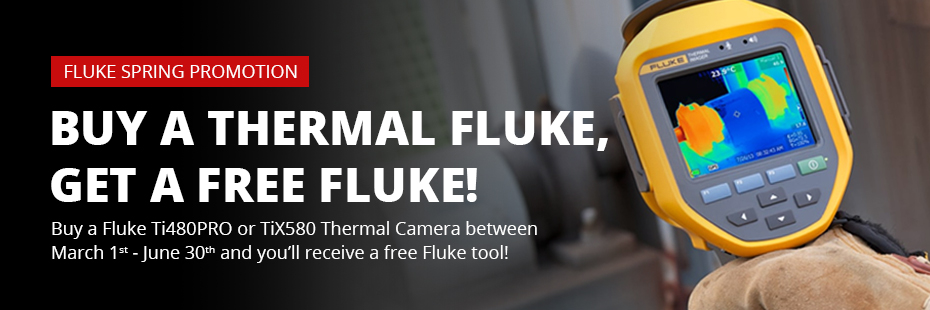 Buy a Fluke Ti480PRO or TiX580 Thermal Camera between March
1st and June 30th 2023 and you’ll receive a free Fluke
tool! Boost your thermal camera purchase this spring with Fluke!
Continue reading →
Buy a Fluke Ti480PRO or TiX580 Thermal Camera between March
1st and June 30th 2023 and you’ll receive a free Fluke
tool! Boost your thermal camera purchase this spring with Fluke!
Continue reading → -
Catch Cattle Lameness with Economical Thermal Cameras
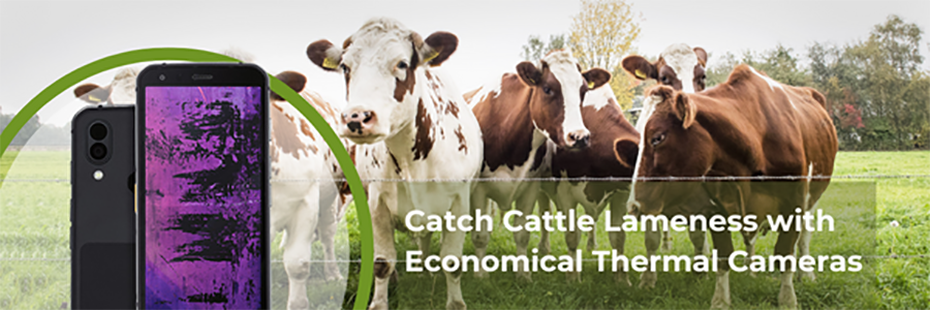 FarmingUK reports that lameness affects between 20% and 25% of cattle across the UK. Usually treated with expensive antibiotics, lameness costs the dairy industry approximately £53 million a year.[1] It has long been acknowledged that thermal imaging can provide an effective method of detecting lameness. Infections or inflammations are often the root cause of lameness and both conditions emit heat which can be picked up by a thermal imager. Catching lameness early and identifying its source means farmers can target their treatments more effectively. For example, lameness caused by an infection can be treated earlier with a shorter course of antibiotics, saving money; whereas lameness resulting from inflammation may be treated more effectively and economically with anti-inflammatories; by blocking the affected claw; or by keeping the cow on a soft surface until she has recovered. Until recently, farmers have been reluctant to invest in thermal imaging as it was thought that only high-end, very expensive models were sophisticated enough to reveal lameness. However, a recent study by Aidan Coe of the Royal Veterinary College (RVC) has discovered that less costly thermal imaging models are just as suitable for recognising lameness in cattle, potentially offering farmers significant savings while also improving the welfare of cows.
Continue reading →
FarmingUK reports that lameness affects between 20% and 25% of cattle across the UK. Usually treated with expensive antibiotics, lameness costs the dairy industry approximately £53 million a year.[1] It has long been acknowledged that thermal imaging can provide an effective method of detecting lameness. Infections or inflammations are often the root cause of lameness and both conditions emit heat which can be picked up by a thermal imager. Catching lameness early and identifying its source means farmers can target their treatments more effectively. For example, lameness caused by an infection can be treated earlier with a shorter course of antibiotics, saving money; whereas lameness resulting from inflammation may be treated more effectively and economically with anti-inflammatories; by blocking the affected claw; or by keeping the cow on a soft surface until she has recovered. Until recently, farmers have been reluctant to invest in thermal imaging as it was thought that only high-end, very expensive models were sophisticated enough to reveal lameness. However, a recent study by Aidan Coe of the Royal Veterinary College (RVC) has discovered that less costly thermal imaging models are just as suitable for recognising lameness in cattle, potentially offering farmers significant savings while also improving the welfare of cows.
Continue reading → -
PASS Proudly Provides FLIR Thermal Cameras for Octopus Energy Home Efficiency Surveys
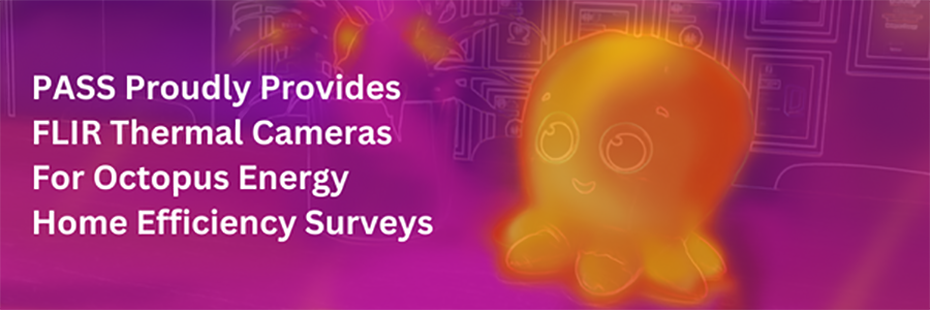 It is no secret that the cost-of-living crisis, rising global temperatures, and approaching climate targets have created more pressure than ever to reduce our energy consumption. For over a year, we have published multiple reports on councils, charities, and utility companies harnessing thermal imaging to identify sources of heat loss around homes, in a bid to reduce both energy bills and carbon emissions. We are very pleased and proud to reveal that we have played a significant role in one of these stories: that of Octopus Energy lending Teledyne FLIR Thermal Cameras to its customers as part of its Octo Assist customer support initiative. As Teledyne FLIR’s number one UK supplier, we initially provided three-hundred Teledyne FLIR One Pro Thermal Smartphone Attachments for Octopus Energy’s thermal camera loan program. Now, thanks to the popularity of the project, we have had the privilege of supplying a further one hundred and seventy new Teledyne FLIR One Edge Pro Thermal Smartphone Attachments. We are delighted to know that these cameras will go towards helping Octopus Energy’s customers lower their energy consumption, emissions, and expenditure.
Continue reading →
It is no secret that the cost-of-living crisis, rising global temperatures, and approaching climate targets have created more pressure than ever to reduce our energy consumption. For over a year, we have published multiple reports on councils, charities, and utility companies harnessing thermal imaging to identify sources of heat loss around homes, in a bid to reduce both energy bills and carbon emissions. We are very pleased and proud to reveal that we have played a significant role in one of these stories: that of Octopus Energy lending Teledyne FLIR Thermal Cameras to its customers as part of its Octo Assist customer support initiative. As Teledyne FLIR’s number one UK supplier, we initially provided three-hundred Teledyne FLIR One Pro Thermal Smartphone Attachments for Octopus Energy’s thermal camera loan program. Now, thanks to the popularity of the project, we have had the privilege of supplying a further one hundred and seventy new Teledyne FLIR One Edge Pro Thermal Smartphone Attachments. We are delighted to know that these cameras will go towards helping Octopus Energy’s customers lower their energy consumption, emissions, and expenditure.
Continue reading → -
PASS Provides FLIR Thermal Camera for Poultry Farmer’s Enlightening Barn Ventilation Report
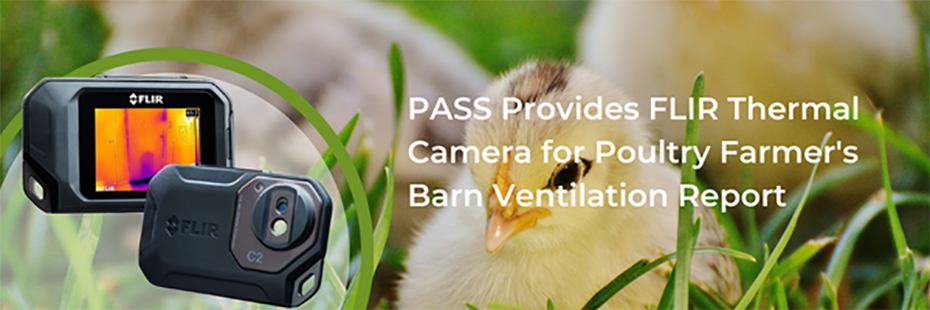 In 2016, PASS Ltd provided Devonshire-based beef and poultry farmer and recipient of Tesco’s Future Farmer Foundation Scholarship, Christina Hutchings, with a FLIR C2 Thermal Imaging Camera for her research into understanding ventilation to improve litter conditions in broiler houses. Now, that highly anticipated report, titled Where does all the water go? How a better understanding of ventilation can be used to improve litter conditions in broiler houses, has been published. In addition to detailing her in-depth investigations which Hutchings draws on to make several suggestions on improving barn ventilation, the report illustrates the critical role thermal imaging can play in farming.
Continue reading →
In 2016, PASS Ltd provided Devonshire-based beef and poultry farmer and recipient of Tesco’s Future Farmer Foundation Scholarship, Christina Hutchings, with a FLIR C2 Thermal Imaging Camera for her research into understanding ventilation to improve litter conditions in broiler houses. Now, that highly anticipated report, titled Where does all the water go? How a better understanding of ventilation can be used to improve litter conditions in broiler houses, has been published. In addition to detailing her in-depth investigations which Hutchings draws on to make several suggestions on improving barn ventilation, the report illustrates the critical role thermal imaging can play in farming.
Continue reading → -
How Thermal Imaging is Helping to Save a Species
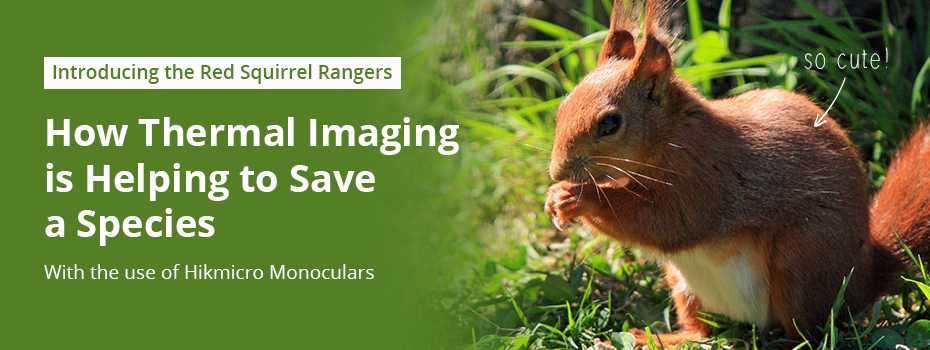 Red Squirrel groups across the UK are using thermal imaging in their plight to protect the breed and the broader ecological system.
Continue reading →
Red Squirrel groups across the UK are using thermal imaging in their plight to protect the breed and the broader ecological system.
Continue reading → -
Winter Is Coming: Prepare Your Home for the Long Night(s) Using Teledyne FLIR Thermal Cameras
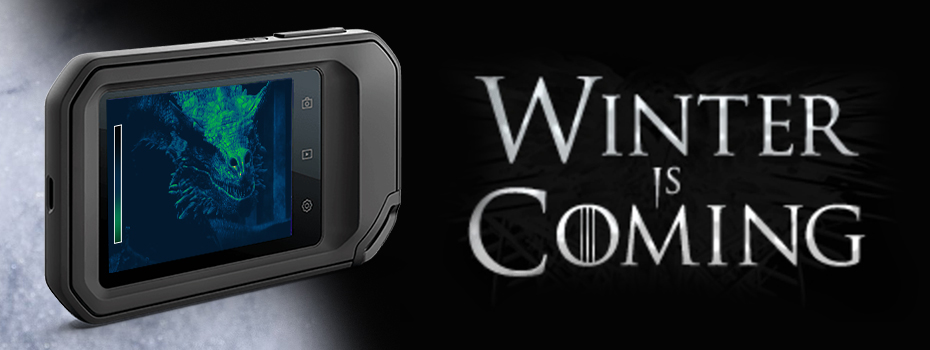 As night gathers our heating watch begins. With energy bills rising, along with anxiety about greenhouse gas emissions, maximising energy efficiency is more important than ever. One of the most effective ways of reducing household bills and emissions is to ensure your home is properly insulated. In fact, energy companies, councils, and charities have all implemented programs to help homeowners do just that.[1] These schemes all have one thing in common: they use thermal imaging cameras to pinpoint areas of heat loss within properties.
Continue reading →
As night gathers our heating watch begins. With energy bills rising, along with anxiety about greenhouse gas emissions, maximising energy efficiency is more important than ever. One of the most effective ways of reducing household bills and emissions is to ensure your home is properly insulated. In fact, energy companies, councils, and charities have all implemented programs to help homeowners do just that.[1] These schemes all have one thing in common: they use thermal imaging cameras to pinpoint areas of heat loss within properties.
Continue reading → -
How to Make Energy Savings - FREE Fluke Workshop
 PASS Ltd invites you to this FREE Energy Saving workshop, hosted by Fluke's Mark Sherwood Technical Product Specialist.
Continue reading →
PASS Ltd invites you to this FREE Energy Saving workshop, hosted by Fluke's Mark Sherwood Technical Product Specialist.
Continue reading → -
Thermal Cameras Used to Monitor Tree Health
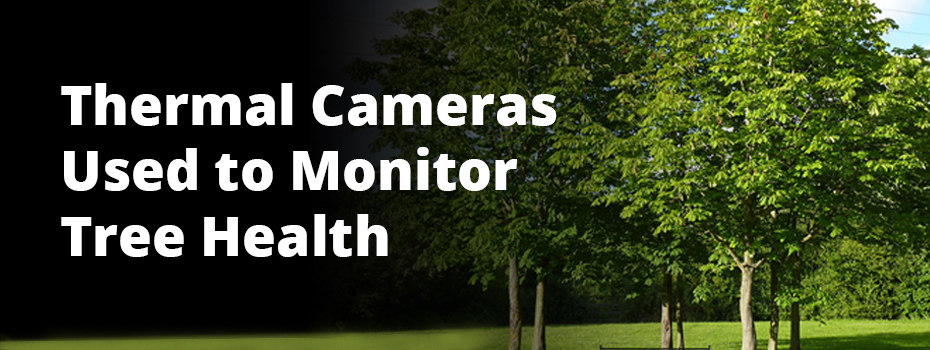 Thermal cameras are suitable for a multitude of ecological applications such as studying bats, monitoring animals in woodland, identifying the presence of algal bloom, detecting effluents in water bodies, and assessing sanitary landfills. Recently, we were made aware of another ecological use when we supplied a thermal camera to a much-valued customer involved with tree thermography.[1]
Continue reading →
Thermal cameras are suitable for a multitude of ecological applications such as studying bats, monitoring animals in woodland, identifying the presence of algal bloom, detecting effluents in water bodies, and assessing sanitary landfills. Recently, we were made aware of another ecological use when we supplied a thermal camera to a much-valued customer involved with tree thermography.[1]
Continue reading →


